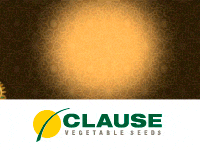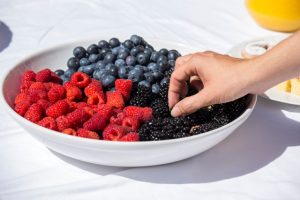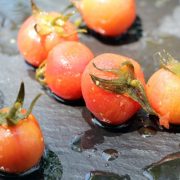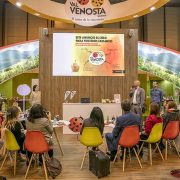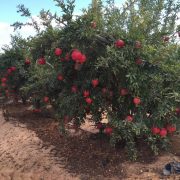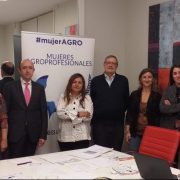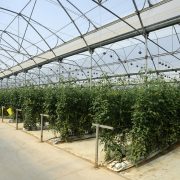The quality and sustainability, keys to the future for the sector of red fruits
Red Fruit Congress, held for the second year in Huelva, began its opening day on June 22th, with emphasis on nutritional values and many healthy properties of these products. Some differential values which, together with the commitment of the sector with quality aspects, diversification of production and environmental sustainability, as key to their future, must know how to move the consumer, who still does not know much about these Natural and Tasty Medicines.
The presentation of the event was given by the president of the Huelva Association of Strawberry Producers and Exporters (Freshuelva), Alberto Garrocho; President of Caja Rural del Sur, José Luis García Palacios; the general director of Food Industry, of the Ministry of Agriculture, Food and Environment (MAGRAMA), Fernando Burgaz; Secretary General of the Agriculture and Food of Ministry of Agriculture, Fisheries and Rural Development of Andalusia (CAPDER), Rafael Peral; the president of the Council of Huelva, Ignacio Caraballo, and the mayor of the capital, Gabriel Cruz.
Throughout all these interventions showed the leading position in production and export of a sector that has managed to make the transition from monoculture strawberry to diversify with other productions such as blueberry, raspberry and blackberry with which synergies are shared. Thus, the general director of Food Industries stressed the important export dimension of red fruit sector, with Spain “the first strawberry producer in the European Union and the fifth in the world, and the world’s leading exporter, while in raspberry and blueberry , although it is the eighth largest producer in the world, it ranks second among exporting countries. ”
Burgaz said, the contribution of this sector to the growth of Spanish food and agriculture, “which has positioned itself as the second economic sector in our country, after tourism and second also in the value of Spanish exports.” In this context, stressed how, “year after year, the Spanish food and agriculture has increased the value of our exports, currently reaching 43,000 million euros, with a trade balance of 10,000 million euros”.
It has also been reported that, in the total exports of Spanish fruit and vegetables, red fruits have increased in value by 4.5% during the first quarter of the year. Specifically, the increase in strawberry was 7% in raspberry 24.7% and 38.5% blueberries.
For his part, President of Freshuelva stressed the importance of this gathering to discuss the future of berries and analyze actions designed to boost the sector and finding new markets with an eye on international experiences of United Kingdom Chile and Italy. In that vein, he expressed his confidence that this initiative will serve to promote the sector and raise awareness of the berries and their nutritional qualities.
In his turn to speak, the president of Caja Rural del Sur has expressed the concern and anxiety of the sector about possible trade problems that could bring a possible way out of the United Kingdom of the European Union (Brexit). In this regard, the Secretary General of Agriculture and Food has recognized that a hypothetical Brexit generate a significant incertidubre in markets, “something that would not suit a purely export sector as the red fruits of Huelva”. Peral has appealed to farmers in this province for flagging sustainability “through efficient use of resources”.
On the other hand, the president of the Provincial Government, Ignacio Caraballo, has been referred to the recent addition of berries to Estrategic Plan of the Province developed by the supramunicipal institution to mark the strategic lines for the future of the sector, since the berries “they are a key sector of the economy of the province and a strategic priority for the future.”
Caraballo offered the support of the County Council to “continue promoting this sector, thriving and innovative, in which the province of Huelva is a leader both within and outside our borders. The red berries are an excellent calling card of the brand ‘Huelva’ and reflect the great potential that has this province in three aspects that I consider fundamental to our future as are quality, diversification and environmental sustainability “.
Finally, the Huelva mayor, responsible for giving inaugurate this conclave, has mentioned the role of red fruits like “letter Huelva’s candidacy to the Spanish Gastronomic Capitalidad in 2017“.
External promotion
The lecture series opened with the presentation “outside Promotion of red fruits” by the CEO of Extenda, Vanessa Bernard, who has reported on the value of exports of red fruits of Huelva in 2015, about 794M€ compared to 817 millions of this sector in Andalusia. This figure represents an increase of over 55% in the last 5 years and more than 15% compared to 2015. According to Bernad, data export of the Andalusian provinces in 2015, “confirm leadership in Huelva red fruit sale abroad (91%, with 55% of strawberries; 27.7% of raspberries and blueberries 16.8%). and it is that, as noted, with 99 regular export ( there have been more than four exports) of a total of 147, the red fruits is consolidated in terms of internationalization, but must seek entrance into new markets to maintain its position sector.
Experience berries market in the UK has come from the hand of the president of British Summer Fruits and Winter Berry Company, Laurence Olins, who has delivered the second presentation of the day. Thus, Olins has detailed the threats to the onubense sector berries detected in the UK market: the rise of new markets, the advancement of campaigns in the UK against the Spanish, quality problems, the high penetration of strawberry in market, new pests and diseases and competition. However, Olins has predicted an “optimistic future” for red fruits, but has called for “greater concentration and cooperation in the sector, as they will be larger scale businesses who will prosper.”
Purchase multisensory experience
Marketing Director Consumer of Human Knowledge, David Martinez, a partner in his speech appealed to consumer psychology as key to improving the shopping experience of red fruits. In his view, it is necessary to purchase a multisensory experience since all the senses come into play when purchasing a product, being the most prevailing view (60%). For this reason and because “about 90% of the information processed by the brain is visual,” Martinez has advised the producers present in the stalls of the Palace of Congresses of the Columbus House, pay special attention to how perceive materials, labeling and presentation of the packaging of their products.
Brake on tumor growth
The health benefits of the consumption of berries has been one of the topics covered in this first day. Dr. Jose Antonio Irles Rocamora, president of the Andalusian Foundation of Nutrition and Dietetics (FAND) and head of the Unit of Clinical Nutrition and Dietetics at the UGC of Endocrinology and Nutrition Hospital of Valme (Sevilla) has placed emphasis on consumption fruit and vegetables as the basis for a healthy diet. “The secret of a balanced diet is in color, since the color code food translates into a wealth of vitamins and micronutrients, highly beneficial to health”.
The president of the FAND has highlighted the impact on cardiovascular health of polyphenols (natural substances produced by plants to protect themselves from external agents) that have red fruits and noted the “close relationship” between fresh consumption and derivatives and the lower incidence of heart problems and strokes. Finally, and based on an epidemiological study, it has estimated the optimal dose of berries consumption three times a week.
Said polyphenols have also focused the speech of the head of the Section of Urology, University Hospital Santa Cristina (Madrid) and expert in Phytotherapy and Nutrition, Juan Carlos Ruiz Red has been referred to, in this case, the antitumor effect of the berries. A property that due to its high ellagic acid, “very potent cancer prevention” and therefore a large protective against prostate tumor and breast. Although found in all red fruits, strawberry pulp and raspberry seeds contain 90% of the beneficial component.
Myths and lack of phytosanitary
Regarding the role of pesticides in the cultivation of strawberries and other red fruits, responsible for Good Practices of the Business Association for Plant Protection (AEPLA), Mamen Márquez, has indicated the myths, misconceptions and “ignorance “in general, as the cause of consumer concerns regarding residues. In this regard, he referred to the existence of a Maximum Residue Limit (MRL) established for each of the uses and the “strict” regulatory system in Europe. In this line, it has ensured that plant protection account for less than 6% of alerts, compared with 54% of those caused by pathogenic micro, mycotoxins and allergens.
Márquez stressed that AEPLA is working on health protection and natural resources such as water and pointed out that the sector’s future is directed towards precision agriculture, with specific products for every need. In his view, crop protection are necessary to achieve efficient use of resources, ensure the production of high quality food and increase sustainable production in agriculture.
The program ended with the presentations entitled “Analysis of market and consumer trends.” The commercial leader of NBD Nielsen Iberia, Ricardo Alcon, has drawn a positive scenario with regard to the berries, which last year grew more than 15% in supermarkets and hypermarkets. As explained, the strawberry is the fruit that has grown in terms of demand in our country (9.2%). In addition, it has shelled the growth opportunities presented by red berries for the consumer: online sales, convenience and health (responding to demographic changes) and sustainability.





